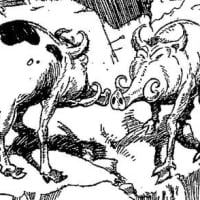RESULTS: 3rd Annual Jesse Callier Post-Collegiate Impact Ranking
Comments
-
HERE WE GO! HERE WE GO!!!CokeGreaterThanPepsi said:BUMP!
It is almost here... I'll send out a call to action in the coming weeks for anyone that wants to participate in my favorite offseason event.
Feel free to look at last years results in this thread. -
-
Hooray. Also my favorite off-season activity.
We're ranking mostly Petersen recruits now if I'm not mistaken? Exciting. I'm just subtracting 1* from all of them right off the too for too much whiteness. -
Yeah this will be the first group of Petersen's class coming through now (not early entrants like last year), and guys that have been with Pete for four years that were recruited by Sark. Really excited to see what the results will show!chuck said:Hooray. Also my favorite off-season activity.
We're ranking mostly Petersen recruits now if I'm not mistaken? Exciting. I'm just subtracting 1* from all of them right off the too for too much whiteness. -
Pointless rankings are one of the things I love most. Put me in.
-
I would have guessed enchiladas followed closely by air ride suspensions, but pointless rankings was solid third.BlastDoor said:Pointless rankings are one of the things I love most. Put me in.
-
In hindsight, Van Winkle might deserve a better rating. I don't think any of us were prepared for how bad Vizcaino was this year
-
I'm not a 100% sure what this is, but I've always had a strong feeling that my opinion really matters in all contexts so my interest is piqued.
-
You aren't allowed to participate, sorry.NorwegianHusky said:I'm not a 100% sure what this is, but I've always had a strong feeling that my opinion really matters in all contexts so my interest is piqued.
-
Fine, I'll make my own rankings! With blackjack and hookers. Actually, forget the rankings...CokeGreaterThanPepsi said:
You aren't allowed to participate, sorry.NorwegianHusky said:I'm not a 100% sure what this is, but I've always had a strong feeling that my opinion really matters in all contexts so my interest is piqued.







